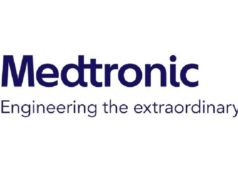
Spinal cord stimulation (SCS) therapies targeting the dorsal column “may be considered” within the multimodal treatment plans typically required by cancer patients, but it is “unclear” which types of cancer-related pain are likely to respond to these therapies. That is according to Sandy Christiansen (Oregon Health and Science University, Portland, USA), who also noted in a presentation at the North American Neuromodulation Society (NANS) annual meeting (12–15 January 2023, Las Vegas, USA) that the current research is limited to certain types of treatment-induced neuropathy across case reports with a “very low grade for certainty of evidence”.
Christiansen began with a brief outline of the numerous causes of cancer-related pain—ranging from the primary or metastatic disease itself, to treatments like surgery or chemotherapy, as well as immobility, infection and cytokine-created inflammation. She further noted the criticality of treating these patients, citing a prevalence as high as 85% in certain cancer types, and the psychological distress and disrupted quality of life many patients experience.
Proposed SCS mechanisms of action to treat cancer-related pain have come under three main categories: nociceptive, neuropathic and nociplastic. However, according to Christiansen, no randomised control trials have been conducted in this space to date, with small case reports and series—in addition to some larger retrospective reviews—constituting the bulk of the existing evidence here.
The speaker did discuss one such report, a 2019 Cochrane systematic review published in the Journal of Pain Research by Jonathan Hagedorn (Mayo Clinic, Rochester, USA) et al, which found significant reductions in pain severity and decreased opioid usage, but also determined a high risk of bias across all of the included studies and, thus, concluded that the evidence was “insufficient”. A retrospective review published in Neuromodulation: Technology at the Neural Interface last year by Amitabh Gulati (Memorial Sloan Kettering Cancer Center, New York, USA) et al did, however, assert that “SCS can be considered as a treatment modality for patients with cancer whose pain is not adequately controlled with medical therapy or by less invasive interventions”, based on data from a cohort of 73 patients.
Moving on to outline key considerations for implanting and trialling SCS systems in cancer patients, Christiansen stated that the “bottom line” is that standard procedural risks are amplified. For example, bleeding risks are exacerbated in cancer patients due to disordered coagulation; infection risks are heightened by immunosuppression, which can be caused by the cancer directly, or may occur secondarily to treatments like radiation or immunotherapy; and impaired wound healing, which can also be a result of the patient being malnourished, or side-effects of their cancer treatments.
Naturally, Christiansen opined, all of these factors demand additional consideration when it comes to implanting an SCS system into a patient—as does the fact that previous reports have indicated stimulators may experience battery drain and electrical failure when they are directly within radiation fields. With these elements in mind, clinicians should pre-emptively anticipate complications or possible reasons for treatment failure that are specific to cancer patients.
“Stick with what you know” was another key message delivered by the speaker, who pointed out that there is Level 1 evidence suggesting a benefit of dorsal column stimulation for chronic neuropathic pain in non-cancer patients. As such, neuropathic cancer-related pain may be an appropriate starting point for the use of SCS therapies.
She also provided the NANS audience with several pieces of advice pertaining to cancer patients, including focusing on the timing of the SCS implantation—or any other interventional pain procedure—relative to chemotherapy, radiation and any other planned treatments, and having a “thorough understanding” of the patient’s prognosis, current state and past treatments.
“Given the time-intensive nature of cancer pain care, a cancer care coordinator can be critical to your success,” Christiansen added.
Prior to concluding, she further highlighted that, in the future, the dorsal column could be targeted in order to reduce centrally sensitised neurons in the spinal cord and supraspinal centres—an approach that could offer benefits in cancer patients who fail sympathetic neurolytic blocks.













